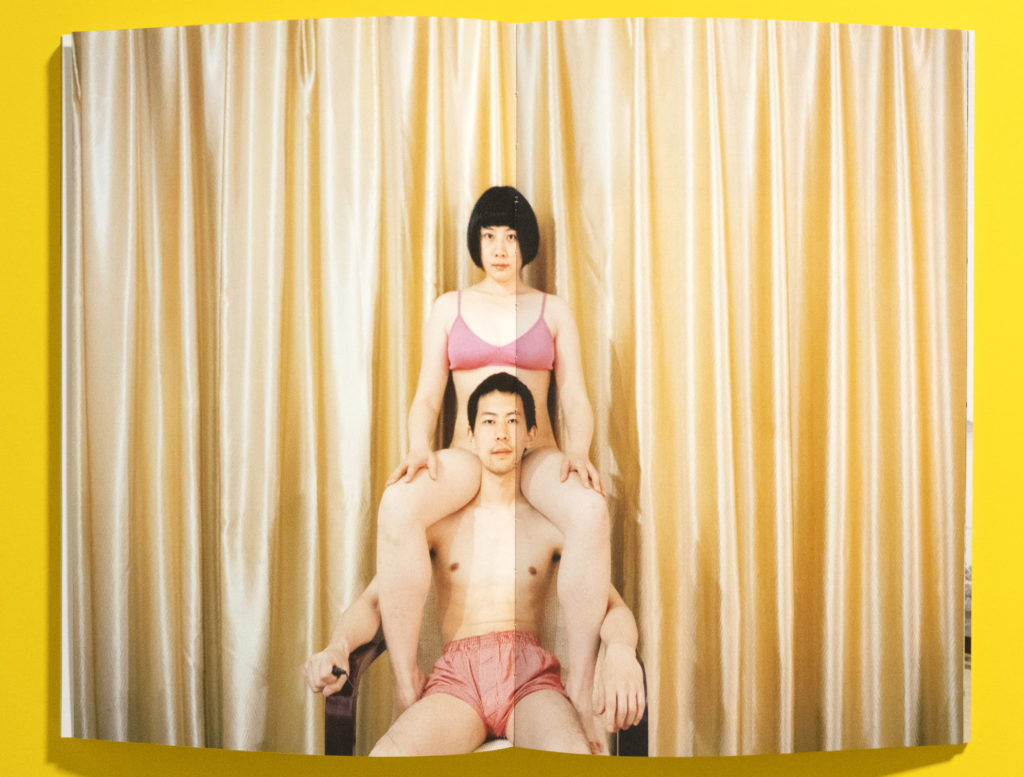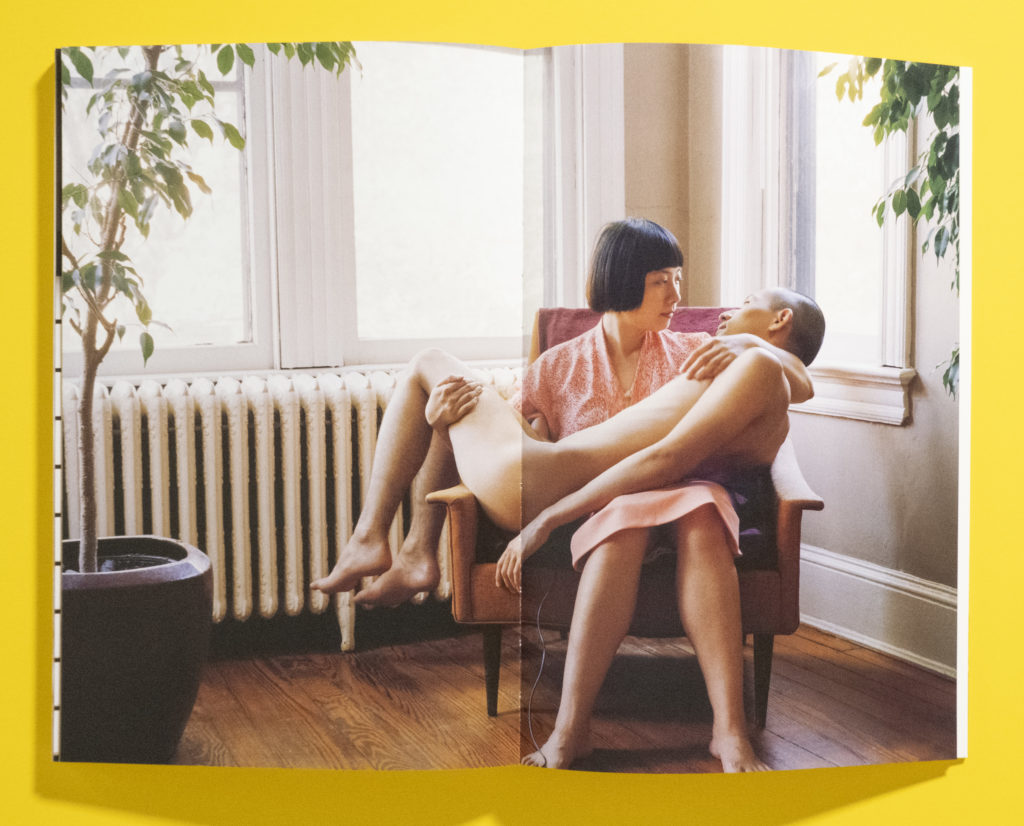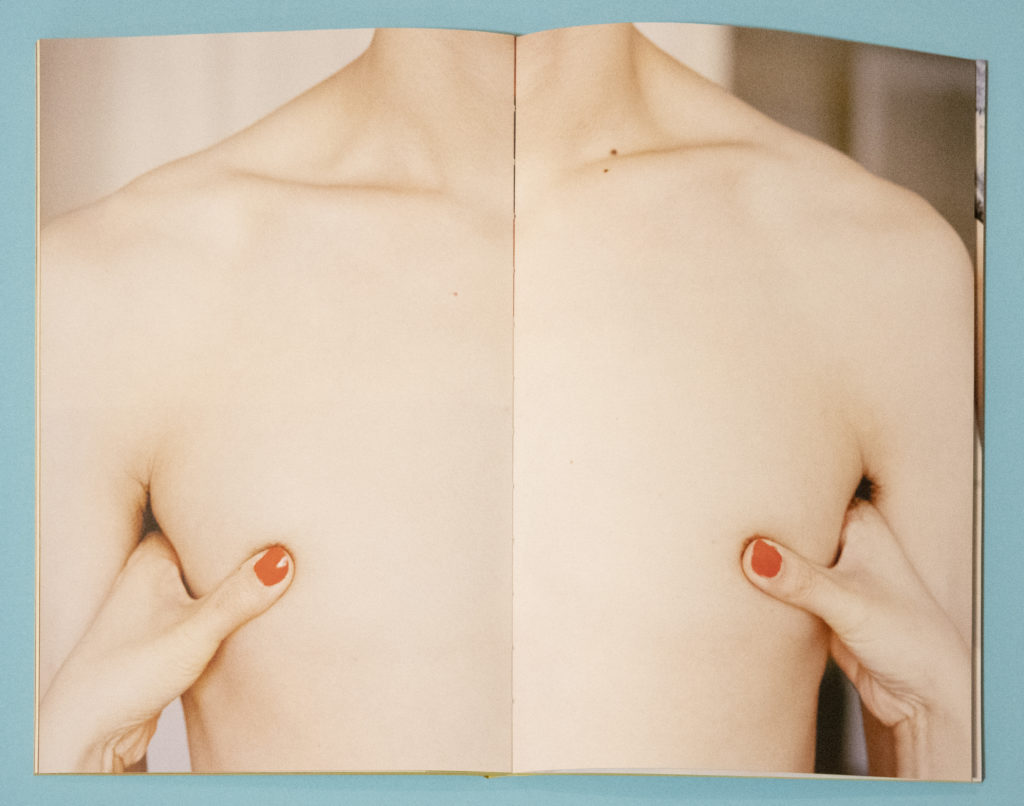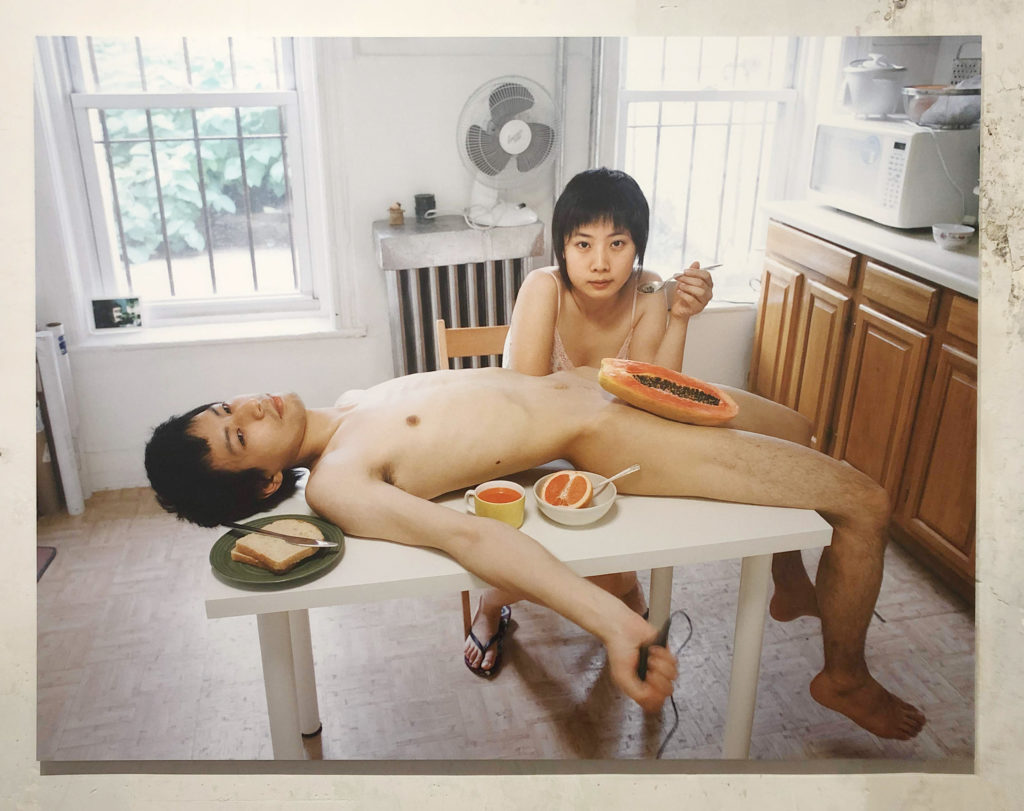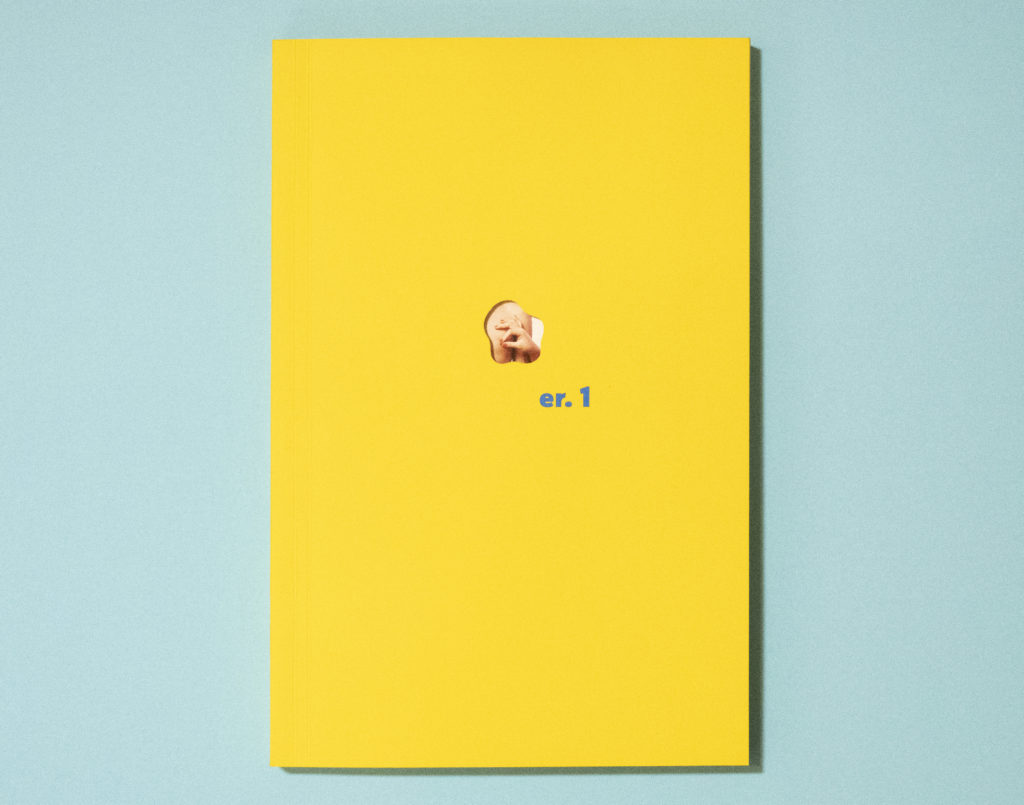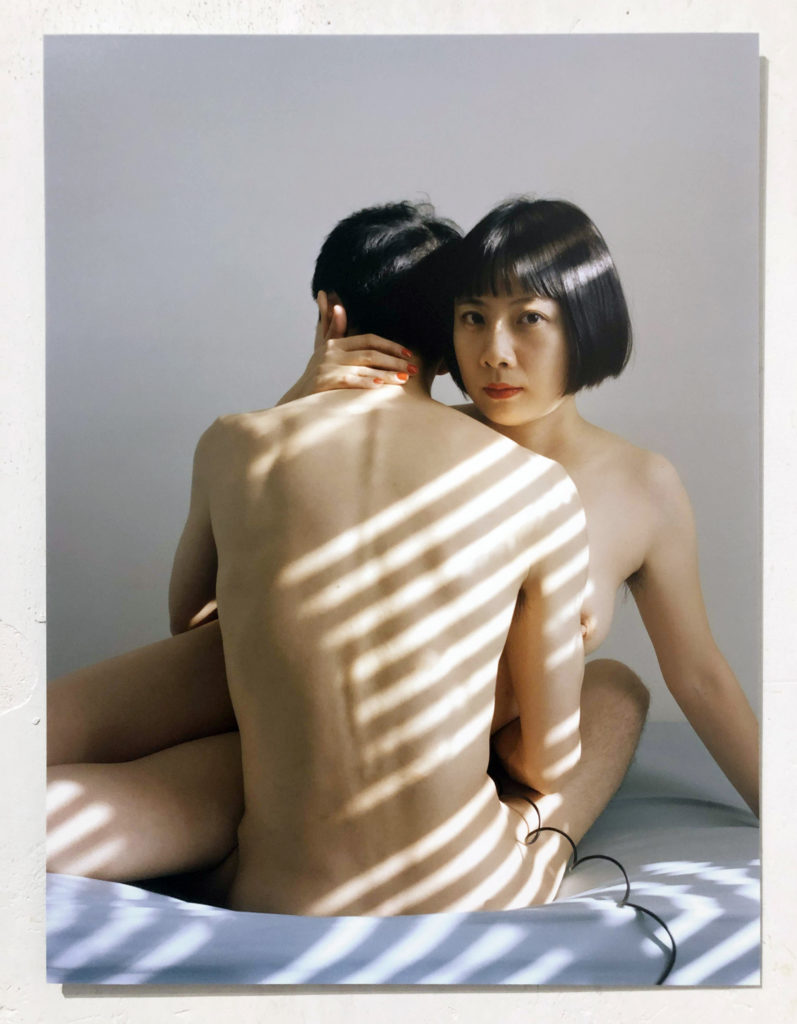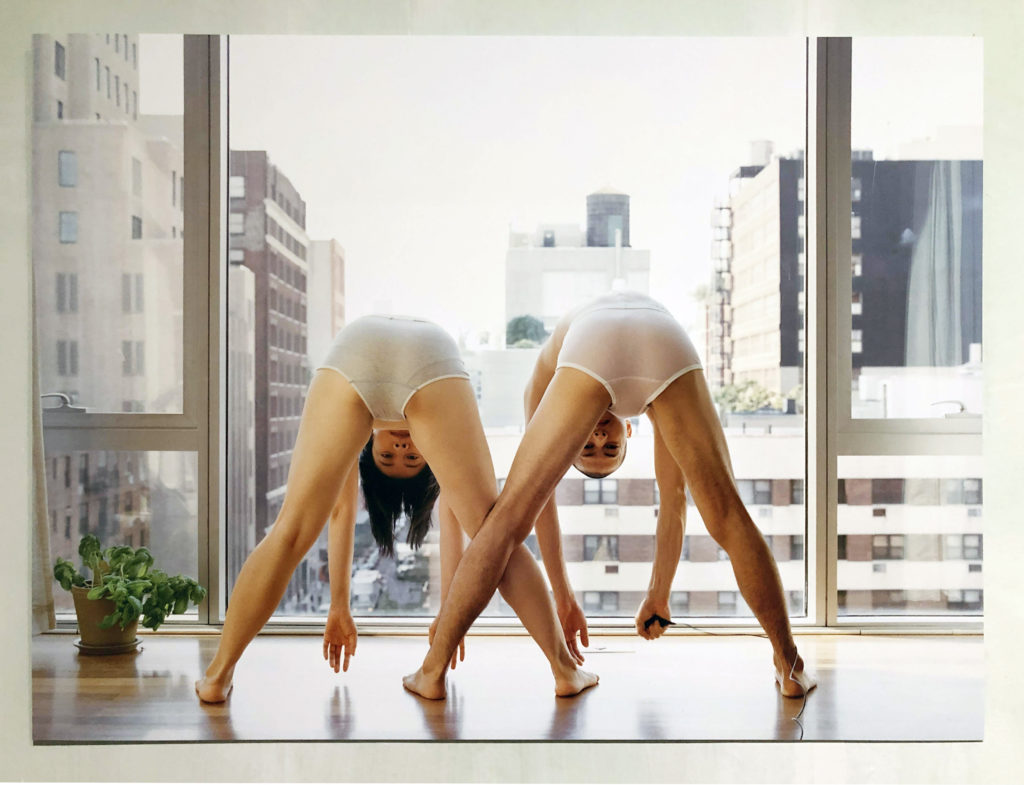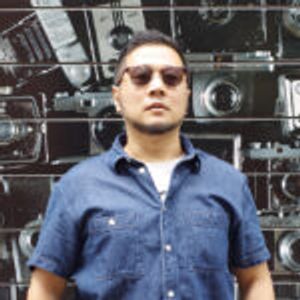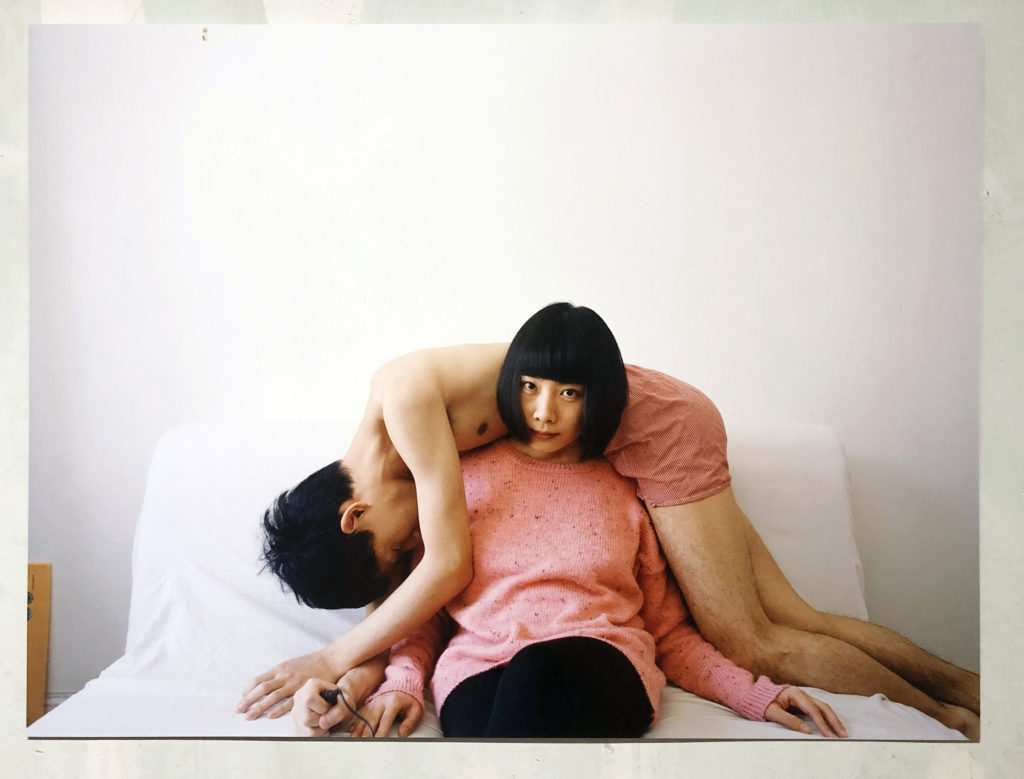
In my first column, I spoke about “Masculinities: Liberation through Photography,” which Barbican Centre in London held this year. The exhibition explored different masculine ideals in society for over 50 years, and it reimagined the way we look at gender today. In this installment, I would like to introduce an artist that questions straight relationships and nudity through her work. And that artist is Pixy Liao, based in New York.
A couple at play — Deviating from conventional gender roles
Pixy Liao started working on her long-term project, Experimental Relationship, in 2007. In the series of photos, she poses performatively with her partner, Moro, in front of the lens. They have a quite charming appeal to them, as the two lovers look like little kittens playing around. But some people might feel a bit uncomfortable at the display of the reversed power dynamic. In one photo, Liao holds Moro and lifts him, and in another, she carries him over her shoulders while she sits on the bed; ultimately, the imagery deviates from conventional gender roles. While Liao is usually wearing clothes, Moro is almost naked, and this emphasizes their fascinating relationship. Instead of taking the photos candidly, Liao herself conceptualizes and cleverly stages them.
Allow me to explain how her project came to be. Pixy Liao, born in Shanghai, China, in 1979, moved to Tennessee to study art photography at the University of Memphis. There she met Moro, a Japanese student studying music. But there was a catch. She grew up in a society where it was the norm to find a reliable, older man and marry into their family, so naturally, Moro, five years her junior, didn’t fit the traditionally ideal description. Thankfully, because she met him abroad, far away from her home country, she could develop a relationship with him. Dating a younger person was a shocking and inspiring thing for her. Thus, she created Experimental Relationship based on her experience in this unfamiliar territory.
Turning the notion of “men act and women appear” on its head
Society has been regarding women as beings to look at, long before the technology for photography was born. Old paintings confirm this. In them, women are usually naked, regardless of the setting, and they direct their gaze at the spectator. To quote the late John Berger in Ways of Seeing: “Men act and women appear. Men look at women. Women watch themselves being looked at. This determines not only most relations between men and women but also the relation of women to themselves.” In Liao’s photos, however, she is the one doing the action. Moro is on the receiving end of the inquisitive gaze from the spectators. Because of this reversal of roles, there is no choice but to speculate on Moro’s relationship with himself as a man. Side note: I caught a glimpse of this framework at “Masculinities: Liberation through Photography” too.
In her work, women are stronger while men are weaker, and women dominate the space while men obey them. If this composition makes people feel uneasy, then it is a testament to how artists and society at large have treated men and women unequally. Let me quote Berger once more concerning how women are portrayed: “… the ‘ideal’ spectator is always assumed to be male and the image of the woman is designed to flatter him.” Liao brought attention to this phenomenon by inverting the positions between man and woman. As the name Experimental Relationship suggests, she addresses the spectator directly by experimenting with her relationship.
Who pressed the shutter button?
So far, we have been able to observe a feminist perspective from her work. Let’s put that aside for a moment and look into Moro’s intent. Some might wonder; isn’t his depiction as a man under Liao’s control insulting? I invite such people to take another look at the photos. Because Liao orchestrates Experimental Relationship and she has the power, the person pressing the shutter button must be her, right? In reality, in most of the photos, it’s Moro who has the remote shutter release in his hand. That’s right; he is the one taking the shot. His pressing of the button confirms his agreement to be in the frame. Liao controls the mise-en-scene, but Moro is the one who decides when to press the button. He chooses to show the spectator he knows he’s being seen.
By Liao taking the reins with the staging and entrusting Moro with taking the shot, she has avoided using him one-sidedly. Instead, she has successfully sublimated the series into a collaborative effort. This experiment is something Liao can’t do on her own. It’s impossible to imagine how the project is going to develop, but let us assume that even in the future, she will continue to come up with photographic works, where we could pick up on social themes and topics. Nevertheless, her current body of work should be of importance in the future because it’s at the base of Liao and Moro’s personal lives and experiences. Isn’t that partially the reason Experimental Relationship is still ongoing today, 13 years since its inception? The two can breathe deeply during a witty performance in front of the camera, instead of being stiff, precisely because they continue to reassure their intimacy and trust through photography.
How peculiar. We all have a firm, unshakeable individuality within our hearts, and yet, when we’re in a social setting, other people shove it away. We end up being judged and measured by our demeanor. But what does it mean to be masculine or feminine? What does it mean to be straight, anyway? — Until today, human societies have distinguished people’s nature and actions according to biological differences in sex. It is a categorical fact to say that countless problems have occurred because of this. We have looked at Liao and Moro’s relationship via her project throughout this piece, but I feel like interpreting their relationship as one fixed ideal of straight relationships, with Liao as the representative of women and Moro as the representative of men, is wrong. What we see here is unique to their style and no one else’s. Now, there’s one question I can’t seem to shake off amidst it all: who is the spectator?
Who is the spectator?
I should touch on Liao’s playfully ironic design. The cover of the photo book of this project is yellow, and in China, it signifies porn. Sure, there are nude photos in the book, but if anybody gets asked, “Is this porn?” they would say no. If I asked you to explain the difference between porn and nudity, how would you answer?
As if that wasn’t difficult enough, both porn and nudity require a similar gaze. I would have to borrow Berger’s help again: “To be nude is to be seen naked by others and yet not recognized for oneself. A naked body has to be seen as an object to become a nude.” Historically, artists have used women’s bodies as objects for the awaiting male gaze outside of the frame, even in the name of art. Porn and nudity don’t have that many differences, as both reject women’s humanity and use their bodies as objects.
Upon thinking about artists that use nude performances in art, Chinese photographer and poet, the late Ren Hang springs to mind. He welcomed young, anonymous models and treated their bodies as though they were objects. In doing so, Hang created photos that were simultaneously simple and poetic, and they swiftly took the world by storm. Perhaps one reason a diverse demographic loved his work is that as a Queer person, he didn’t make his work just for the male gaze. There was a wholesomeness to his photography, as they weren’t specifically for men or women but were for people. Reality is harsh, though. Chinese authorities strictly monitor his work to this day, and this is proof that they believe the spectator of nude expressions is, indeed, men.
Liao is based in America today, but her origins are in her home country. If we think about her identity as an artist, her questions are always born with China at the base. I would say that is why she covered her photo book in yellow. Artists don’t have the privilege to choose their spectators. “Who is the spectator?” That is the sentiment at the root of Liao’s photos. And the genuine value of Experimental Relationship lies in how the answer is bound to change over time.
Photography Tomo Kosuga
Translation Lena Grace Suda

